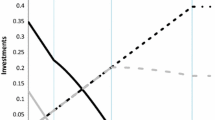Summary and Conclusions
A large percentage of sports fans and the general public consider professional athletes to be overpaid. Of course, given their unique skills and abilities, athletes' salaries are high compared to other vocations. The relevant concept of overpayment, however, is in relation to a player's worth to his team. The fan or observer who recognizes that high salaries may in fact reflect players' abilities and contributions to team success, both on the playing surface and at the bank, is probably in the minority. In this paper, it has been argued that the exploitation of athletes depends on the structure of the labor market in professional sports. Despite their high salaries, professional athletes have not always (and some still do not) enjoyed a privilege available to both fans and owners — the privilege of selling their skills to the highest bidder.
Previous studies have concluded that restrictions on baseball players' mobility depressed their salaries belowMRP's, and that removal of these restrictions resulted in salaries reflecting a player's value to his team. In this paper, it has been found that the same phenomenon has occurred in basketball, with salaries rising to the level ofMRP when players were given virtually unlimited freedom to negotiate. In addition, no significant evidence of racial discrimination was found in the NBA. The labor market in professional basketball might thus serve as a role model for baseball and football.
Similar content being viewed by others
References
Associated Press, “Scout Says Pirates Need More White Ballplayers,” inThe Atlanta Constitution, May 18, 1982. (a)
__, “Madlock Agrees with Haak,” inThe Opelika-Auburn News, May 19, 1982. (b)
Jim Bouton,Ball Four, New York: World Publishing, 1970.
Robert H. Boyle, “The 55% Solution,”Sports Illustrated, 56, February 1, 1982, pp. 30–37.
James Cassing and Richard Douglas, “The Auction Mechanism in the Free Agent Market,”Southern Economic Journal, 46, October 1980, pp. 139–53.
David Davenport, “Collusive Competition in Major League Baseball, Its Theory and Institutional Development,”The American Economist, 14, Fall, 1969, pp. 6–30.
Frank Deford, “Four for Philadelphia,”Sports Illustrated, 54, March 30, 1981, p. 17.
Henry Demmert,The Economics of Professional Team Sports, Lexington, Massachusetts, D.C. Heath, 1973.
Thomas P. Gilroy and Patrick J. Madden, “Labor Relations in Professional Sports,”Labor Law Journal, 27, December 1977, pp. 768–776.
10James Gwartney and Charles Haworth, “Employer Cost and Discrimination: The Case of Baseball,”Journal of Political Economy, 82, July/August 1974, pp. 873–82.
11David Halberstam,The Breaks of the Game, New York: Alfred Knopf, 1981.
12International City Management Association,The County Year Book, Washington, 1980.
__,The Municipal Year Book, Washington, 1980.
14Jim Kaplan, “Let the Games Begin,,”Sports Illustrated, 55, August 10, 1981, pp. 14–9.
Jerry Kirshenbaum (ed.), “Scorecard,”Sports Illustrated, 56, February 1, 1982, pp. 7–8.
16Douglas S. Looney, “The Start of a Chain Reaction?”Sports Illustrated, 44, February 16, 1976, pp. 18–20.
17Jeff Madura, “Discrimination in Major League Baseball,”Atlantic Economic Journal, 8, July 1980, pp. 70–1.
Joe Marshall, “Finding Square One,”Sports Illustrated, 46, March 7, 1977, pp. 63–64.
Marshall H. Medoff, “A Reappraisal of Racial Discrimination Against Blacks in Professional Baseball,”The Review of Black Political Economy, 5, Spring 1975, pp. 269–79.
Fred Mitchell, “Equality Goal in New NBA Pact”,The Sporting News, 195, April 11, 1983, pp. 34–5.
Robert G. Mogull, “A Note on Racial Discrimination in Professional Basketball: A Reevaluation of the Evidence,”The American Economist, 21, Fall 1977, pp. 71–5.
__, “Discrimination in Baseball Revisited,”Atlantic Economic Journal, 7, July 1979, pp. 66–74.
__, “Salary Discrimination in Professional Sports,”Atlantic Economic Journal, 9, September 1981, pp. 106–10.
Roger G. Noll, “Attendance and Price Setting,” in R.
Frank A. Scott, James E. Long, and Ken Somppi, “Free Agency, Owner Incentives, and the National Football League Players Association,”Journal of Labor Research, 4, Summer 1983, pp. 257–64.
Gerald Scully, “The Economics of Discrimination in Professional Sports: The Case of Baseball,” in R. Noll (ed.)Government and the Sports Business, Washington: Brookings, 1974. (a)
__, “Pay and Performance in Major League Baseball,”American Economic Review, 73, December Noll (ed.)Government and the Sports Business, Washington: Brookings, 1974.
Anthony Pascal and Leonard Rapping, “The Economics of Racial Discrimination in Organized Baseball,” in A. Pascal (ed.)Racial Discrimination in Economic Life, Lexington, Massachusetts, D.C. Heath, 1972.
Henry J. Raimondo, “Free Agents' Impact on the Labor Market for Baseball Players,”Journal of Labor Research, 4, Spring 1983, pp. 183–93.
Joan Robinson,The Economics of Imperfect Competition, London: Macmillan, 1933.
1974, pp. 915–30. (b)
Paul M. Sommers and Noel Quinton, “Pay and Performance in Major League Baseball: The Case of the First Family of Free Agents,”Journal of Human Resources, 17, Summer 1983, pp. 426–36.
The Sporting News, St. Louis, Missouri, various issues.
John C. Weistart and Cym H. Lowell,The Law of Sports, New York: Bobbs-Merrill, 1979.
M. Winick (ed.),N.B.A. Guide, St. Louis: Sporting News, 1980–81, 1981–82.
World Almanac, New York: Newspaper Enterprise Association, 1981.
Norman R. Yetman and D. Stanley Eitzen, “Black Athletes on Intercollegiate Basketball Teams: An Empirical Test of Discrimination,” in N. Yetman and C. Steele (eds.)Majority and Minority: The Dynamics of Racial and Ethnic Relations, Boston: Allyn & Bacon, 1971.
Thomas Zak, Cliff Huang, and John Siegfried, “Production Efficiency: The Case of Professional Basketball,”Journal of Business, 71, July 1979, pp. 379–92.
Author information
Authors and Affiliations
Rights and permissions
About this article
Cite this article
Scott, 1.A., Long, 1.E. & Somppi, K. Salary Vs. marginal revenue product under monopsony and competition: The case of professional basketball. Atlantic Economic Journal 13, 50–59 (1985). https://doi.org/10.1007/BF02304294
Issue Date:
DOI: https://doi.org/10.1007/BF02304294



